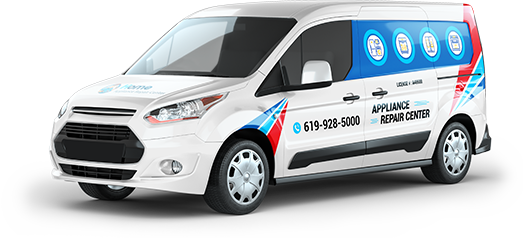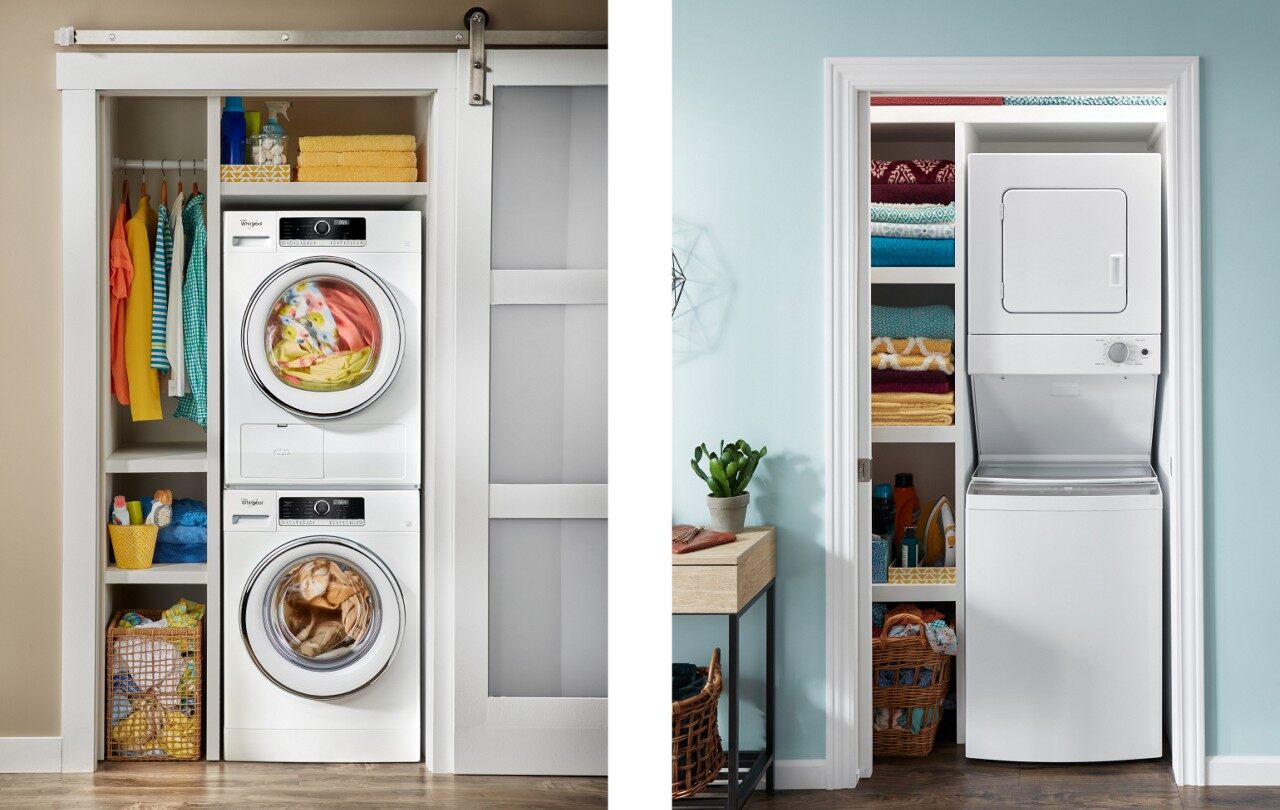As more and more customers are interested in space-saving appliances, manufacturers have created special units. In each unit a washer has been stacked onto a dryer, or vice versa. Not all of the units share exactly the same features.
The features that can vary
The width of the appliances is not the same in every unit with stacked appliances. In some cases, both appliances have a width of 27 inches. That is a standard width for a home appliance. Other stacked appliances are just 24 inches wide. The narrower unit fits more easily into a closet.
Most of the units that have one appliance stacked on a second one require a 220 volt outlet. The typical home does not have such an outlet. Consequently, the stacked pair has to be installed by a licensed electrician. There are some units on the market that can work, if plugged into a 110 volt outlet.
Manufacturers have designed a way to put a top-loading washer in a stacked unit. Still, not every unit on the market has a top-loading washer; some have a front-loading clothes washing machine. Most of the companies have been forced to respect the fact that not all consumers want to use an electric dryer; just as not all consumers prefer a gas dryer. Some of the units have an electric dryer; others have one that uses gas to produce the warm air. That warm air gets fed into the dryer’s turning drum.
Not every unit has the same energy efficiency. Consumers must read the yellow label, in order to discover the unit’s energy efficiency. A lower number means a higher efficiency. Of course the more efficient units also cost a good bit more. You can consult with an appliance repair professional in Burlington before choosing the right one.
Problems linked to stackable washers and dryers
The height of these units reflects the average height of the consumers that are expected to use them. Some of them can have a raised door that is not easy to reach. Sometimes, a short person can open the door, but then that same person struggles to remove the clothes that have been thrown onto the drum’s rear wall.
Sometimes manufacturers put together two machines that are not of the same quality. If one machine breaks down, the other keeps working. The consumer must decide how to deal with the presence of a non-functioning appliance. Some consumers have tried to carry out DIY stacking. In such units, the washer must be one that has its door in the front, rather than on top. In addition, such a unit needs to have a support framework for the dryer.
Contact us:
 619-928-5000
619-928-5000  Request Service
Request Service 
